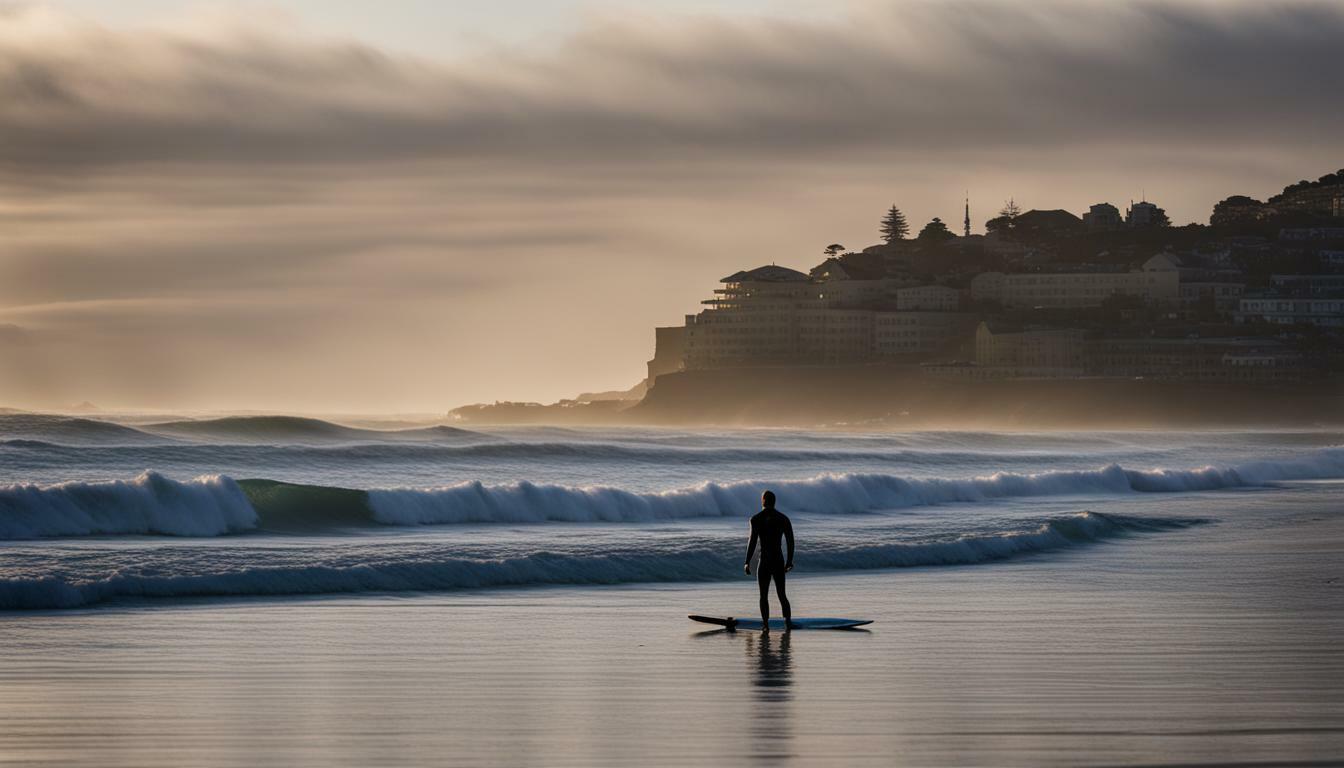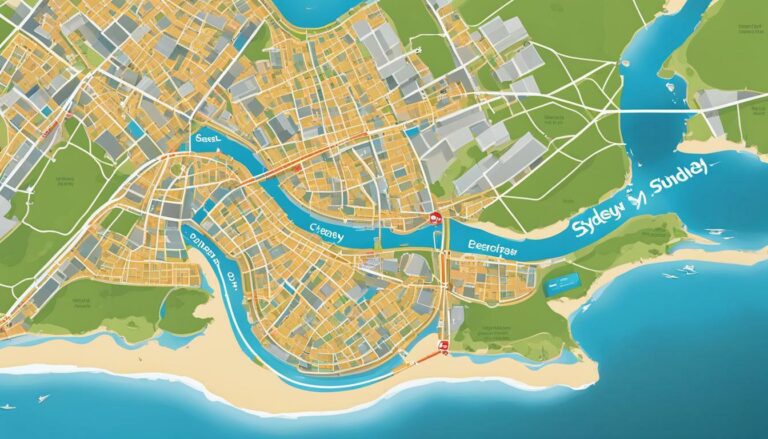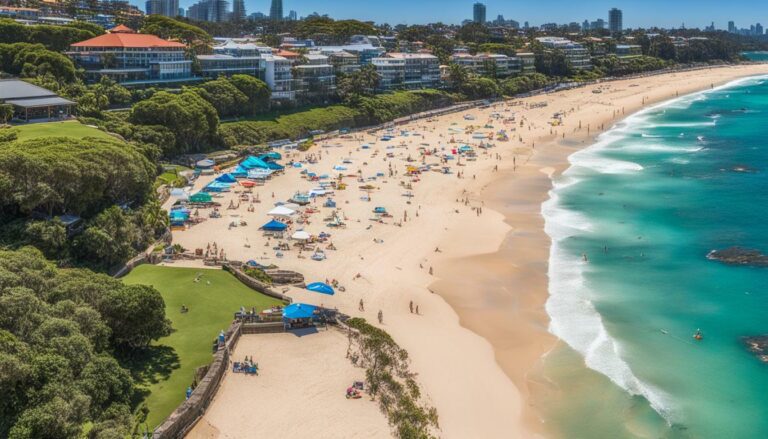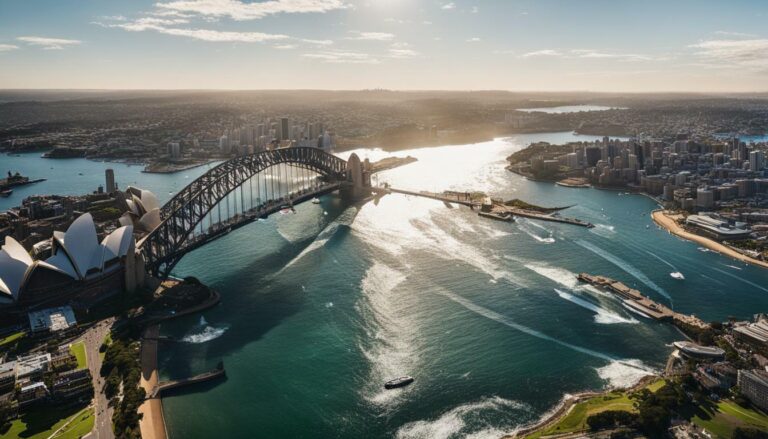Can You Swim at Bondi Beach in July? Your Guide to Winter Surfing.
Bondi Beach, located in Sydney, Australia, is famous for its beautiful golden sand and azure waters. It has been a favorite destination for surfers of all skill levels, attracting beginners and experienced surfers alike. If you’re planning a trip to Bondi Beach in July, you might be wondering if it’s possible to swim and surf during this time of year. This guide will provide you with all the information you need to know.
Key Takeaways:
- July is often cited as the best time to surf at Bondi Beach due to consistent waves and crystal clear waters.
- Bondi Beach offers a nurturing environment for beginner surfers with designated surfing areas and numerous surf schools offering lessons.
- Experienced surfers can find challenging sections at Bondi Beach, particularly in the central and southern areas.
- Swimmers and surfers must be aware of rip currents and the Australian sun, as well as practicing safety precautions such as staying within designated areas and wearing sun protection.
- If looking for alternative surfing locations, Sydney’s coastline has several other hotspots worth exploring.
Surfing at Bondi Beach in July: Tips for Beginners
For beginners, Bondi Beach offers a nurturing environment to start your surfing journey. The expansive shoreline and forgiving waves make it an ideal place to learn. If you’re new to surfing, it’s recommended to take a lesson from one of the numerous surf schools along the Bondi shoreline. These surf schools have experienced instructors who are eager to introduce beginners to the thrilling world of surfing. Booking a lesson in advance will ensure that you secure your spot.
When it comes to equipment, soft-top boards are recommended for beginners. These boards are more forgiving and offer better stability, making it easier for novices to ride the waves. It’s also important to know the designated surfing areas at Bondi Beach. Beginners should stay within the beginner zone, located to the north of the beach. It’s crucial to avoid surfing near or between the red and yellow flags, as this area is designated for swimmers only.
Aside from taking lessons and picking the right equipment, timing is also crucial when it comes to beginner surfing at Bondi Beach. The best time for beginners to surf at Bondi Beach is during the early morning or late afternoon when the waves are calmer and less crowded. This will allow you to focus on your skills without the distraction of too many people around.
Remember, surfing takes time and patience to master. Don’t get discouraged if you’re not catching waves right away. Keep practicing, and with time, you’ll be riding waves like a pro.
Surfing at Bondi Beach in July: Tips for Experienced Surfers.
Experienced surfers will also find Bondi Beach enticing, as it offers challenging sections for those with advanced skills. The central section of Bondi is known for serving up some challenging waves suitable for experienced surfers. The southern stretch of the beach is particularly appealing, with consistent and bigger waves. However, it’s important to be cautious as this area comes with its set of challenges, including rocks and a notorious rip current. Being aware of these challenges and practicing surf safety is essential for all surfers.
If you’re an experienced surfer looking for a challenge, consider heading south towards the rocky sections of the beach. Here, you’ll encounter bigger waves that are sure to get your heart rate up. However, it’s important to be cautious and avoid surfing near rock formations or cliffs. These areas are dangerous and could lead to severe injuries.
Another thing to consider when surfing at Bondi Beach is the tide. It’s essential to pay attention to the tide charts before heading out to the water. Low tide can provide better surfing opportunities with more exposed sandbanks, while high tide can create more powerful waves suitable for experienced surfers.
If you’re looking to surf at Bondi Beach in July, it’s vital to consider the water temperature. July is winter in Australia, and the water temperature at Bondi Beach can drop to around 16°C. It’s recommended to wear a wetsuit to avoid getting cold and to make the experience more enjoyable.
Lastly, always remember to practice surf safety when surfing at Bondi Beach. Being aware of the waves, tides, and weather conditions is essential for your safety and the safety of others in the water. Always surf within your abilities, and if you’re unsure about anything, seek advice from an experienced surfer or lifeguard.
The Best Time to Surf at Bondi Beach in July
Now, let’s talk about the best time to surf at Bondi Beach. Contrary to popular belief, winter, especially July, is often cited as the best time for surfing at Bondi. The waves are more consistent during this time, and the water is crystal clear. For beginners, the summer months offer gentler and more forgiving waves. However, the beach is usually crowded during summer due to the warmer weather and school holidays.
Surfing conditions at Bondi Beach in July are ideal for most surfers. The water temperature ranges from 15-19°C, making it comfortable to surf even without a wetsuit. The water clarity during this time is also an added advantage, contributing to an exhilarating surfing experience.
It’s important to note that the beach can become quite crowded during weekends and school holidays, especially during summer. If you’re looking for a more peaceful surfing experience, it’s recommended that you visit Bondi Beach during weekdays or early mornings.
Additionally, the ideal time of day to surf at Bondi Beach varies depending on the tides. Some of the best waves occur during low tide, which often coincides with sunrise or sunset. It’s best to check the tides before planning your surfing expedition to ensure the perfect wave.
In summary, July is the best time to surf at Bondi Beach due to consistent waves, crystal clear waters, and comfortable temperatures. However, it’s important to consider the crowd levels and ideal surfing times to have the best possible experience.
Safety Tips for Swimming and Surfing at Bondi Beach in July
While enjoying the exhilarating experience of surfing, it’s crucial not to overlook safety precautions. Bondi Beach has designated swimming areas marked by red and yellow flags, which indicate the safest areas to swim. It’s important to stay away from these flags if you’re surfing and not to venture far from the shore if you’re not a strong swimmer.
Rip currents are a common phenomenon at Bondi Beach, as they are at many other beaches. If caught in a rip current, it’s essential to stay calm, float, and signal for help. Panic can lead to exhaustion, making it more difficult to escape the current. It’s essential to remember that rip currents are not life-threatening if dealt with correctly.
In addition to rip currents, it’s crucial to be mindful of the Australian sun, especially during July. The sun can be fierce even on cloudy days, making it important to wear sunscreen, a hat, and consider a rash vest for added sun protection.
If you’re swimming or surfing alone, inform a friend or family member of your plans and expected return time. In case of an emergency, they will know where to start the search.
Remember, the safety of yourself and others should always come first. Bondi Beach offers a fun and exhilarating experience, but it’s crucial to practice surf safety, stay within designated surfing areas, and be aware of rip currents.
Surfing at Bondi Beach in July: Conclusion
In conclusion, Bondi Beach is a fantastic destination for surfers of all skill levels. Whether you’re a beginner or an experienced surfer, Bondi offers a range of waves to cater to your abilities. July, despite being winter, is often cited as the best time for surfing at Bondi, with consistent waves and crystal clear waters. However, it’s crucial to take surf safety seriously and be aware of your surroundings. It’s also important to stay within designated surfing areas and avoid surfing near or between the red and yellow flags. Additionally, the Australian sun can be fierce, so wearing sunscreen and a hat, and considering a rash vest for added sun protection is necessary.
If you’re looking for alternative surfing locations, Sydney’s coastline has several hotspots worth exploring, including Tamarama Beach, Bronte Beach, and Maroubra Beach. Whatever your choice, one thing is consistent, surfing at Bondi Beach in July is a thrilling experience that’s not to be missed.
FAQ
Q: Can I swim at Bondi Beach in July?
A: Yes, you can swim at Bondi Beach in July. However, it’s important to be aware of the water conditions and any safety precautions.
Q: Is Bondi Beach crowded in July?
A: Bondi Beach can be crowded in July due to the popularity of the destination. It’s advisable to plan your visit accordingly and be prepared for larger crowds.
Q: Are there surfing lessons available at Bondi Beach in July?
A: Yes, there are surfing lessons available at Bondi Beach year-round, including in July. It’s recommended to book in advance to secure your spot.
Q: Are there designated surfing areas at Bondi Beach?
A: Yes, there are designated surfing areas at Bondi Beach. Beginners should stay within the beginner zone, located to the north of the beach.
Q: What are the best times for surfing at Bondi Beach in July?
A: July is often cited as a good time for surfing at Bondi Beach, with consistent waves and clear water. It’s advisable to check local surf reports for the most accurate information.
Q: Are there other surfing locations near Bondi Beach?
A: Yes, there are other surfing locations near Bondi Beach, such as Tamarama Beach, Bronte Beach, and Maroubra Beach, which offer different surf breaks and atmospheres.
Q: What safety precautions should I take when surfing or swimming at Bondi Beach in July?
A: It’s important to stay within designated swimming and surfing areas, be aware of rip currents, wear sunscreen, and follow surf safety guidelines.







